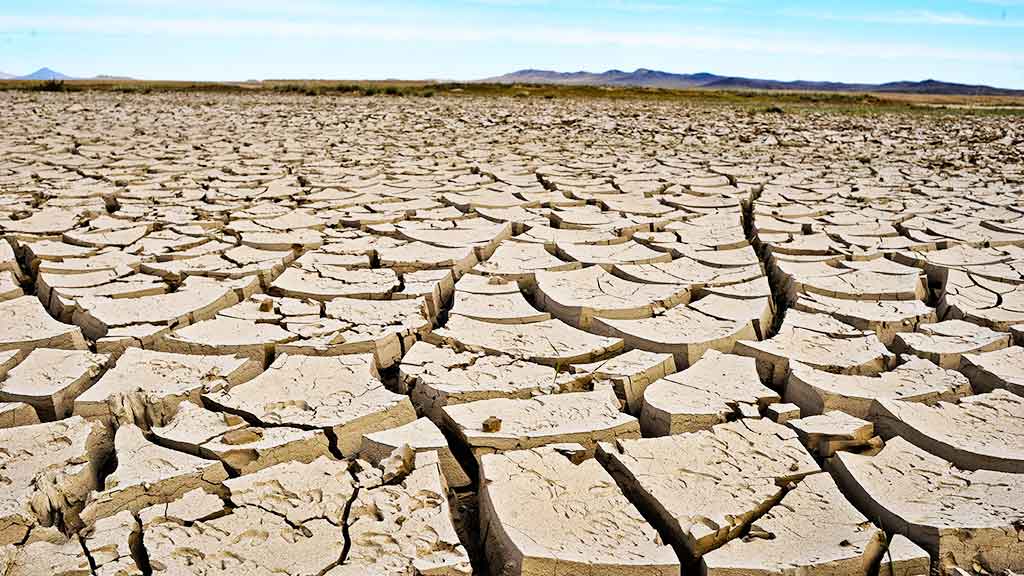Why El Nino in Monsoon 2023 is bad news for India
Experts have warned that the gradual advancement of the El Niño weather patterns this year may lead to deficit monsoon rainfall
By Editorial Team / Apr 18, 2023

Image Credit: Economic Times
The India Meteorological Department (IMD) this week delivered its first long-range forecast for this year’s monsoon. In terms of total rainfall observed over the season, the IMD expects this year’s monsoon to bring 96% of the Long Period Average (with a modelling error of +/-5%). The forecast, if it materialises, places monsoon performance within the “normal” range, albeit narrowly.
Despite the normal forecast, mid-way into summer 2023, India is jittery. Big shifts underway in oceanic and atmospheric circulations could carry momentous implications for South Asia. The El Nino Southern Oscillation (ENSO)—a natural warming and cooling cycle originating in the Pacific Ocean—is increasingly showing signs of a phase shift. After a prolonged La Niña—the cool phase of the ENSO, which lasted three years—the Pacific is showing signs of warming, indicating the return of the El Niño—the warm phase of the cycle.
With sea surface temperatures gradually rising in the equatorial Pacific, forecasters around the world expect the transition to an ENSO-neutral state across the Northern Hemisphere by May 2023, and then possibly move into an El Niño phase. It has been suggested that there is about a 50% probability of an El Niño developing between July-September 2023. The World Meteorological Organisation (WMO) has also stated that the probability of El Niño developing this year gradually increases from 15% in April-June to 35% in May-July, reaching significantly higher chances of around 55% during June-August. The Bureau of Meteorology (Australia) has also predicted a 50% chance of El Niño forming later in the year and has issued an El Niño watch. Meanwhile, the IMD, too, in its latest ENSO bulletin dated January 2023, foresees a sharp rise in the probability of an El Nino developing during the southwest monsoon.
Why is this shift, happening hundreds of thousands of kilometres away, causing trepidation in the sub-continent?
What is El Niño and La Niña?
An El Niño condition occurs when oceanic temperatures in the equatorial Pacific Ocean become warmer than average (0.5°C above the long-term average) and east winds blow weaker than normal. Meanwhile, during La Niña, water temperatures become cooler than normal because of the upwelling of cold water from the bottom of the sea. La Niña has the capacity to alter the direction as well as the velocity of the trade winds, which trigger the winter season in India. El Niño and La Niña are opposite extremes of the El Niño Southern Oscillation (ENSO).
At present, negative sea surface temperatures (SST) anomalies have gradually weakened across most of the equatorial Pacific Ocean, and positive SST anomalies have strengthened in the past four weeks in the far western and eastern Pacific, especially near the coast of Ecuador and Peru. While negative SST implies cooler oceanic temperatures than average, positive SST means the ocean is warmer than average.
El Niño and its impact on the Indian summer monsoon
The amount of rainfall that India receives during the summer monsoon period—between June to September—varies every year. This year-to-year variation, also known as the interannual variability of monsoon, is dependent on many factors. It is estimated that about 30% of the yearly variability depends on the ENSO effects of El Niño and La Niña, and the rest depends on other factors such as the IOD (Indian Ocean Dipole), Atlantic sea surface temperature (SST) variability, North Atlantic Oscillation (NAO), Pacific Decadal Oscillations (PDO), to more short-term and local factors such as dust clouds and patterns of irrigation.
Experts have warned that the gradual advancement of the El Niño weather patterns this year may lead to deficit monsoon rainfall, and are worried that it might have a devastating effect on the ecosystem as it is now unfurling in a world destabilised by climate change. There has not been an official announcement by the IMD of the possibility of El Niño playing havoc with the summer monsoon, but based on rainfall trends in India over 132 years, it is clear that severe droughts in India have always been accompanied by El Niño events. About 60% of the time, there is a probability of drought in India during an El Niño year, and while the chances of normal rain are rare at 10%, the prospect of below-normal rain is 30%.
While the top-line from IMD’s first monsoon forecast for 2023 screams “normal” monsoon this year, the devil is in the details. A closer reading shows that the forecast probability actually suggests a more than 50% chance of the monsoon being below normal. Mapped out, a larger extent of the country is likely to receive below normal rain compared to areas that are likely to see above normal rainfall. Further, historically, a transition from a La Niña winter to an El Niño summer tends to produce the largest deficit in the monsoon—around 15%—and signifies the chances of weaker pre-monsoon and monsoon circulations.
Historical data shows that there were 15 moderate and strong El Nino events between 1951 and 2022. Of these years, the Indian monsoon was deficient in 8 years and in another 3 years, the monsoon rainfall was on the lower side of the norm. Therefore, in a moderate to strong El Nino year, there is a 73% chance that monsoon rainfall in India will be below the long-term normal. The last major El Nino event was in 2015 and Indian monsoon rainfall was 13% lower.
El Niño conditions have been known to be unpredictable and it is too early to determine how El Nino would affect the monsoon’s onset in Kerala and the rest of India. But Skymet, a private weather agency, has predicted that the upcoming monsoon will be ‘below normal’ to the tune of 94% ( with an error margin of +/-5%) of the long-period average (LPA) of 868.6mm from June to September. The northern and central parts of India will be at risk of being rain-deficit. While Gujarat, Madhya Pradesh and Maharashtra will witness inadequate rains during July and August, Punjab, Haryana, Rajasthan and Uttar Pradesh will be more likely to observe less than normal rains during the second half of the season.
An unsafe summer
According to a study by researchers at the Indian Institute of Technology (IIT), Gandhinagar, the frequency of extreme weather events such as floods and heatwaves is projected to rise manifold in India in the future due to climate change, and might pose severe challenges for adaptation in agriculture, infrastructure, and public health. The period from 1951 to 2020 was studied to quantify India’s risk of sequential extremes—heatwaves in the summer and extreme rainfall in the following summer monsoon season over the same regions. It was found that the risk will increase significantly during the El Niño phase and Uttar Pradesh, Bihar, Jharkhand, Chhattisgarh, and Karnataka will have a higher projected risk of sequential extremes than the other states.
Climate mitigation and reduction in vulnerability could help in reducing the risk. But most heat action plans (HAPs) are poor at targeting vulnerable groups. A new report by the Centre for Policy Research (CPR) assessed 37 heat action plans across 18 states in India to understand how well prepared the country is to deal with heat waves. Most HAPs are not built for local context and have a simplified view with a general focus on dry extreme heat.
Only 10 out of 37 HAPs reviewed seem to establish locally defined temperature thresholds, although it is unclear whether they take local risk multipliers, such as humidity, hot nights, and duration of continuous heat among others, into account to declare a heatwave. The plans are also underfunded and poor at identifying vulnerable groups. Only two of 37 HAPs explicitly carry out and present vulnerability assessments and only 11 of 37 HAPs discuss funding sources. HAPs are India’s primary policy response to economically damaging and life-threatening heat waves.
The IOD wildcard
Coming back to the monsoon, the ENSO is hardly the only dynamic influencing the monsoon. In fact, over the past century or so, the influence of the ENSO on India’s summer monsoon has been observed to be weakening.
Prime among the determinants of the extent and manner of the ENSO’s influence on the Indian monsoon is unsurprisingly found closer to home. The Indian Ocean Dipole (IOD) essentially describes the aperiodic oscillation of heat distribution and the resultant pressure difference between the western and eastern Indian Ocean—effectively on either side of the Indian peninsula. A warmer Arabian Sea relative to the Bay of Bengal denotes a positive IOD while the reverse denotes a negative IOD.
The IOD’s influence on the monsoon during el Nino years is particularly interesting. When it is in the negative phase, the IOD impedes the formation of the monsoon trough over the subcontinent and suppresses rainfall. Broadly, the opposite has been observed when the IOD is in the positive phase, with stronger monsoon winds increasing the chance of normal rains during the season.
The catch, however, is in the distribution of rainfall. Positive IODs, while finding correlation with increased rainfall, have also been observed to increase the number of extreme rain events in practically every part of the country. Even in northern India and the lower Himalayan region where frequency of extreme rain events show a negative trend, intensity of extreme rain events have been increasing. As it happens, the IMD while presenting its LRF, noted that although the IOD remains in the neutral phase currently, the chances of a positive phase developing are on the rise. And along with it, so are the chances that we are likely to see a turbulent monsoon, if not deficient.
How will El Niño impact agriculture output in India?
While La Niña is associated with good rainfall in Southeast Asia, the contrary is true with El Niño. During El Niño, trade winds weaken, and warm water is pushed back east, toward the west coast of the Americas. Warm oceans enable evaporation and therefore lower pressure, causing air and moisture to ascend. The moisture condenses in the heights to form clouds, storms, heavy rain and floods. The reverse happens at the other end (Asia) where waters become cooler, and air descends and builds pressure, setting up clear skies and below-normal rainfall.
The beginning of an El Niño phase is always bad news for agriculture as poor southwest monsoon rains across India could affect the production of Kharif (summer and autumn) crops—paddy, groundnut, pulses, sugarcane and cotton. El Niño will not only come in the way of production, but will also affect farm income and rural spending.
The finance ministry has raised concerns over the possible impact of El Niño conditions on India. In its monthly economic report for January, the ministry said, “Some meteorological agencies predict the return of El Niño conditions in India this year. If these predictions are accurate, then monsoon rains could be deficient, leading to lower agricultural output and higher prices”.
India will inevitably experience a severe pre-and post-monsoon phenomenon, which will affect the agriculture sector. The rising heat has already posed a risk for agricultural crops. Higher temperatures have led to a crash in the prices of onion in some parts of the country, including Maharashtra’s Lasalgaon. The prices of potatoes also reported a sharp drop in Punjab, Uttar Pradesh, Bengal, Haryana, Gujarat, and Maharashtra.
The India Meteorological Department (IMD) has declared above-normal maximum temperatures over most parts of northeast India, east and central India and some parts of northwest India. Normal to below-normal maximum temperatures have been predicted for the rest of the country. Heatwaves are predicted over parts of Bihar, Jharkhand, Uttar Pradesh, Odisha, West Bengal, Chhattisgarh, Maharashtra, Gujarat, Punjab and Haryana.
However, the Ministry of Agriculture is still hopeful and has projected a record wheat production of 112.18 million tonne (MT) in the current crop season (July-June), while ruling out any major reduction in grain output from recent unseasonal rains in key states. Recently, due to unseasonal rains and hailstorms in producing states, about 8-10% of the wheat crop has been estimated to be damaged but better yield prospects in late-sown areas are expected to make up for the production loss.
But is India prepared to face losses? India saw a record sowing of mustard in the 2022-23 Rabi season. But fresh spells of rain recorded in January damaged the crops in several places. The area under mustard was recorded at 9.7 million hectares (ha), according to data uploaded by the agriculture department. This is almost 700,000 ha more than last season. The increase in acreage was also more than other competing crops. But the bumper production was hampered in certain places due to cold waves, leading to ground frost in some areas in the northern belt. Maximum damage was reported from Udaipur, Sirohi, Churu, and Ajmer.
India is expected to suffer losses in the production of Alphonso mangoes too. Mango yield in the Dharwad district of Karnataka is expected to be low this year, with the delay in flowering. Unseasonal rain and hail storms have damaged mango yield in Uttar Pradesh too. While 35% of the production in the Mal-Malihabad belt, one of the largest producers of mangoes in the state, may have been affected, other districts could witness 20-25% crop damage.
If El Niño predictions are to come true, it will add to the damages already caused to the agricultural sector by unseasonal rain and heatwaves. For the time being, the IMD seems to have calmed nerves through its beige forecast. Beyond seasonal rainfall, it will likely be the distribution of rains that will truly determine the flavour of India’s tryst with the monsoon this year.
The article was originally published in CarbonCopy
Monsoon in IndiaSouthwest Monsoon 2023 El Nino El Nino and Monsoon in India

